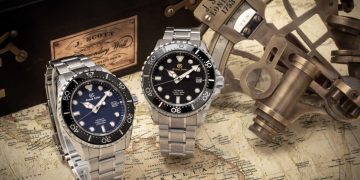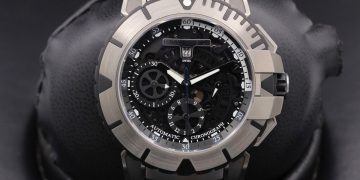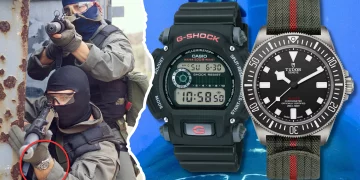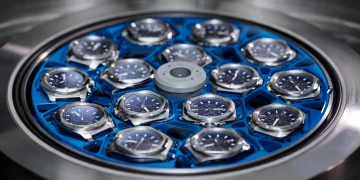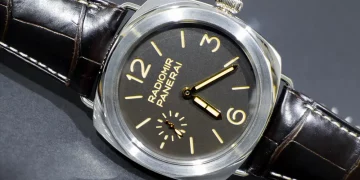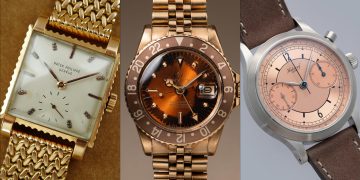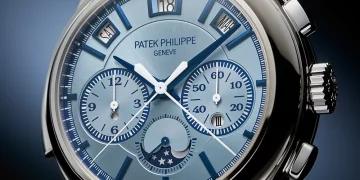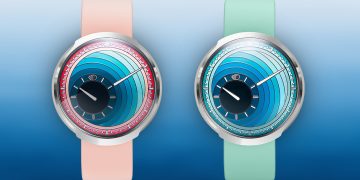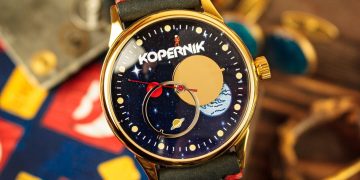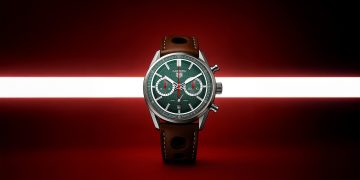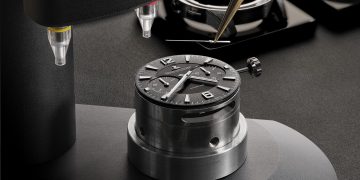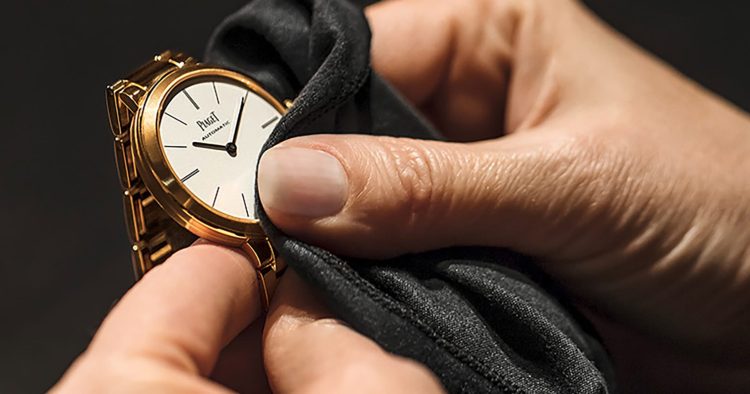Introduction
A luxury watch is not only an accessory—it’s a piece of fine craftsmanship, a work of art, and often an investment that lasts for generations. Whether it’s an iconic Rolex, a Patek Philippe, or a Jaeger-LeCoultre, watches are designed to stand the test of time. However, like all precision instruments, watches require care and maintenance to ensure that they continue to perform optimally. Over time, watches may experience wear and tear, loss of accuracy, or even mechanical failure. Regular checks and maintenance are essential to preserving the life and functionality of a watch.
So, how do you know when your watch needs a thorough inspection or servicing? Knowing the signs and understanding the signs of wear can save your timepiece from unnecessary damage and ensure that it continues to provide years of enjoyment. In this article, we will discuss the key indicators that it’s time for a comprehensive checkup, the importance of regular servicing, and how to ensure your luxury watch is functioning properly.
We will cover everything from external factors like water resistance and aesthetic damage to internal concerns such as movement accuracy and lubrication. Additionally, we will provide tips on choosing a qualified watchmaker for servicing and discuss the key maintenance practices that will help preserve the performance and value of your luxury watch.
1. The Importance of Regular Watch Maintenance
1.1 Why Regular Maintenance Matters
- A luxury watch is a precision instrument. Over time, the oils in the movement dry up, and the intricate gears and components require servicing to keep them running smoothly.
- Regular maintenance ensures that the watch’s accuracy, performance, and longevity are preserved, and it helps maintain its resale value.
- Unchecked damage, especially to the internal movement, can result in costly repairs.
1.2 Understanding the Components of a Watch
- The movement: The engine of the watch, where the gears, springs, and components work together.
- The case: The outer shell that protects the movement.
- The dial: The face of the watch, which displays the time and other complications.
- The crystal: The protective glass that shields the dial from damage.
- The bracelet or strap: The band that secures the watch to the wearer’s wrist.
Each of these components may require attention and care at different intervals to ensure the watch remains in excellent condition.
2. Key Indicators That Your Watch Needs a Checkup
2.1 Loss of Accuracy
- One of the most noticeable signs that a watch needs servicing is a loss in timekeeping accuracy.
- Mechanical watches should run with a high degree of precision, often within a few seconds per day.
- If your watch is consistently running fast or slow, it may be time for an overhaul, especially if the movement hasn’t been serviced for several years.
2.2 The Watch Stops or Malfunctions
- If your watch stops running altogether, even after winding or resetting it, it could indicate a problem with the movement.
- Common issues might include a broken mainspring, damaged gears, or a malfunctioning escapement.
2.3 Aesthetic Damage
- The watch’s external appearance can also signal when it needs attention.
- Scratches on the crystal, case, or bracelet can be cleaned or polished. However, more severe damage like cracks or chips may require replacement.
- Additionally, worn-out gaskets or damage to the water resistance system could allow moisture or dust to infiltrate the movement.
2.4 Water Resistance Problems
- If the watch has been exposed to moisture or water, it may not be properly sealed anymore.
- Over time, gaskets and seals wear out, compromising the water resistance of the watch.
- If your watch is not holding up to its stated water resistance rating (e.g., 30 meters, 100 meters), a professional checkup is needed.
3. How Often Should a Watch Be Serviced?
3.1 Typical Servicing Intervals
- Most watch manufacturers recommend a comprehensive servicing every 3 to 5 years, but this can vary depending on the watch’s brand, movement type, and usage.
- Some watches may require more frequent servicing if they are exposed to harsher conditions, like frequent swimming or outdoor activities.
3.2 Factors Affecting Service Frequency
- The type of movement: Automatic, manual, and quartz watches each have different servicing needs.
- Usage habits: Watches that are worn daily or subjected to extreme temperatures or moisture will need more frequent attention.
- Brand-specific guidelines: Always refer to the manufacturer’s service recommendations for your specific watch model.

4. Key Components That Require Attention During a Comprehensive Service
4.1 Movement Cleaning and Lubrication
- One of the most important parts of any watch service is cleaning and lubricating the movement. The internal gears and mechanisms must be kept free of dirt and grime, and the oil used to lubricate the movement can dry out over time, causing the movement to function improperly.
4.2 Replacing Worn-out Parts
- Parts like the mainspring, escapement, and balance wheel may need to be replaced if they show signs of wear or malfunction.
- A qualified watchmaker will assess all components to determine if replacements are necessary.
4.3 Crystal Replacement
- Scratches and chips on the watch crystal can not only impair the aesthetic appeal but can also allow dust or moisture to enter the movement.
- Watchmakers can polish minor scratches, but deep chips or cracks may require a complete crystal replacement.
4.4 Gasket Replacement
- The gaskets in the watch ensure water resistance. Over time, gaskets can become brittle, leading to leaks.
- Replacing gaskets during service ensures that the watch retains its water resistance and prevents damage from external elements.
4.5 Bracelet/Strap Repair or Replacement
- The bracelet or strap of the watch is subjected to wear and tear, and it may need to be repaired or replaced over time.
- Adjusting the length of the bracelet, replacing worn links, or fixing the clasp are common services offered by watchmakers.
5. The Watchmaker’s Role in Maintaining Your Watch
5.1 Choosing the Right Watchmaker
- Selecting a qualified and trusted watchmaker is crucial for the proper servicing of your luxury timepiece.
- Authorized service centers: Many luxury watch brands have authorized service centers with certified technicians who specialize in their watches.
- Independent watchmakers: Many skilled, independent watchmakers are also highly capable of servicing luxury watches and may offer more personalized service.
5.2 The Servicing Process
- A typical servicing process includes disassembling the watch, cleaning and lubricating the movement, replacing worn-out parts, checking the water resistance, and reassembling the timepiece.
- After servicing, the watch is often tested for accuracy, power reserve, and functionality to ensure it’s running as it should.
5.3 Cost of Servicing
- The cost of servicing can vary depending on the complexity of the watch and the specific services required.
- Routine services for basic watches might be relatively affordable, while overhauls for high-end or complicated watches can be significantly more expensive.
6. How to Prevent Issues and Extend the Life of Your Watch
6.1 Daily Care and Maintenance
- Simple practices like wiping down your watch regularly, storing it in a cool and dry place, and avoiding extreme temperatures can prevent unnecessary wear.
- Additionally, avoid wearing the watch during activities that could cause damage, such as heavy manual labor or exposure to chemicals.
6.2 Proper Storage
- When not wearing the watch, store it in a watch box or case to prevent dust and moisture from affecting it.
- For automatic watches, using a watch winder will help maintain the movement and prevent the watch from losing time.
6.3 Regular Visual Inspections
- Take a moment every few months to visually inspect your watch for scratches, water damage, or other signs of wear. Early detection of potential issues can save time and money in the long run.
7. Conclusion: The Importance of Timely Checkups for Luxury Watches
Luxury watches are much more than just timepieces—they are investments, expressions of style, and representations of craftsmanship. To preserve their beauty, functionality, and value, regular maintenance is essential. By paying attention to the signs that your watch needs a checkup, you can ensure that it continues to perform at its best, avoid unnecessary repairs, and prolong its lifespan.
If you’re unsure when your watch needs a service, always consult with an authorized service center or experienced watchmaker. With the right care, your luxury timepiece will continue to provide you with reliable service for years to come, retaining its charm and value as a cherished heirloom.


